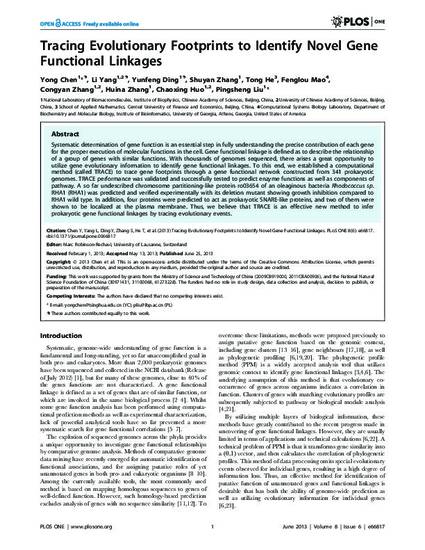
Systematic determination of gene function is an essential step in fully understanding the precise contribution of each gene for the proper execution of molecular functions in the cell. Gene functional linkage is defined as to describe the relationship of a group of genes with similar functions. With thousands of genomes sequenced, there arises a great opportunity to utilize gene evolutionary information to identify gene functional linkages. To this end, we established a computational method (called TRACE) to trace gene footprints through a gene functional network constructed from 341 prokaryotic genomes. TRACE performance was validated and successfully tested to predict enzyme functions as well as components of pathway. A so far undescribed chromosome partitioning-like protein ro03654 of an oleaginous bacteria Rhodococcus sp. RHA1 (RHA1) was predicted and verified experimentally with its deletion mutant showing growth inhibition compared to RHA1 wild type. In addition, four proteins were predicted to act as prokaryotic SNARE-like proteins, and two of them were shown to be localized at the plasma membrane. Thus, we believe that TRACE is an effective new method to infer prokaryotic gene functional linkages by tracing evolutionary events.
Yong Chen, Li Yang, Yunfeng Ding, Shuyan Zhang, Huina Zhang, Tong He, Fenglou Mao, Congyan Zhang, Chaoxing Huo, Pingsheng Liu. (2013). Tracing evolutionary footprints to identify novel gene functional linkages, PLOS ONE 8(6): e66817.

PLoS One is an Open Access journal.